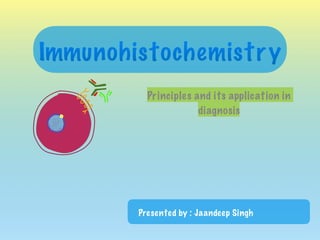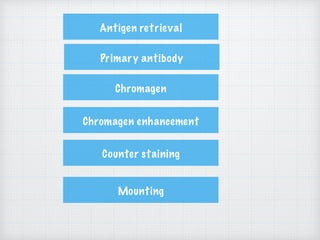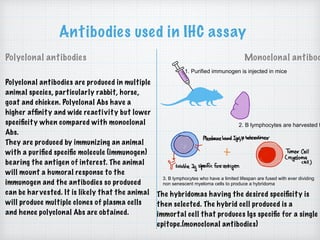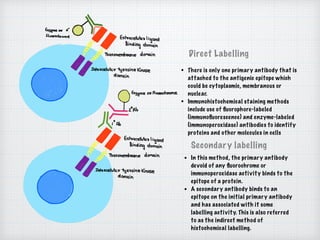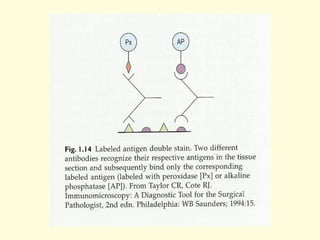Immunohistochemistry is a technique that uses antibodies to identify antigens in cells of a tissue sample. It relies on the principle of antibodies binding specifically to antigens in cells. The primary antibody binds to the antigen of interest, while the secondary antibody is conjugated to an enzyme or fluorescent label for visualization. A chromogen is used to produce a colored precipitate that can be seen under the microscope. Immunohistochemistry has many applications in pathology for tumor diagnosis and classification by identifying cellular markers of differentiation. It allows identification of cell lineages and tumor types through characteristic protein expression patterns revealed by specific antibody staining.
